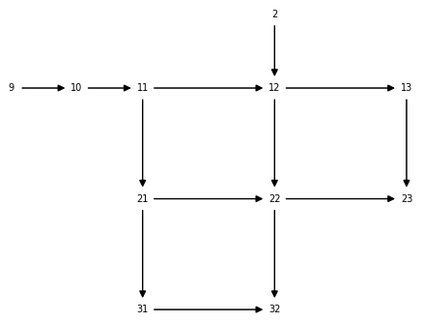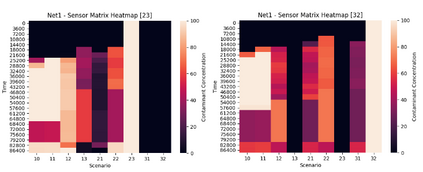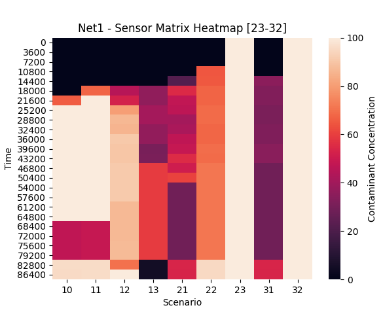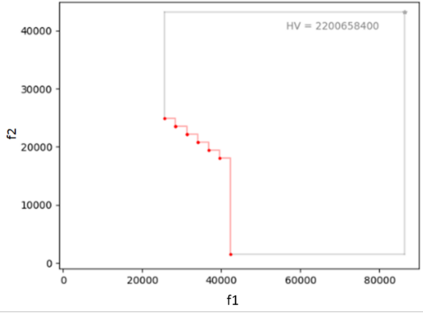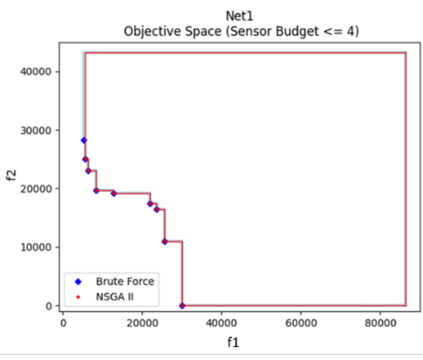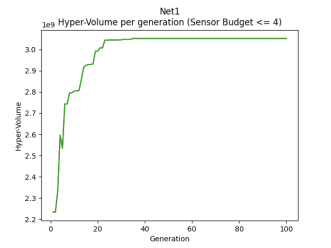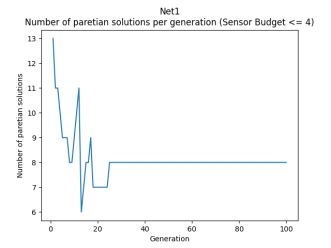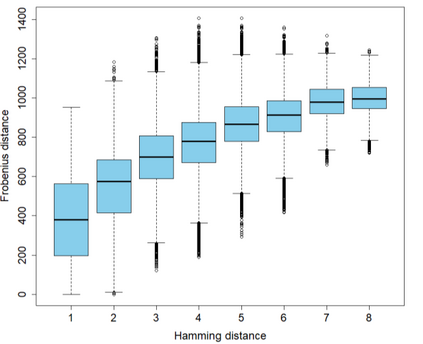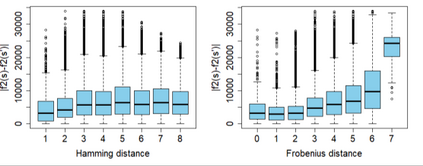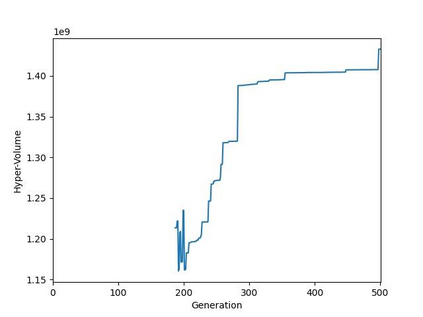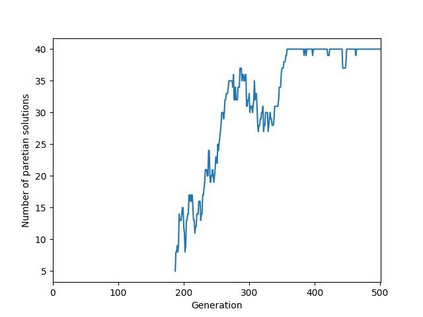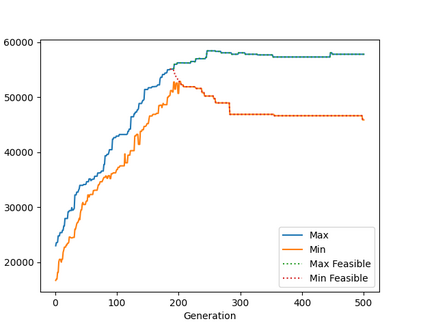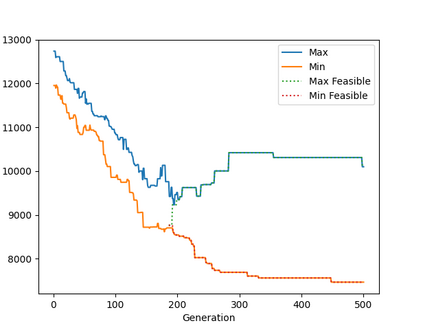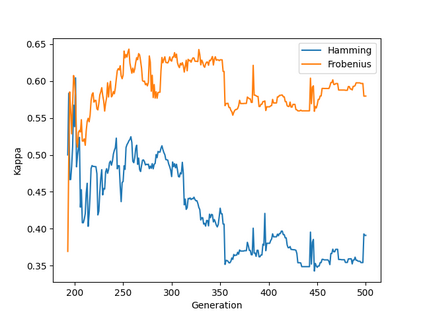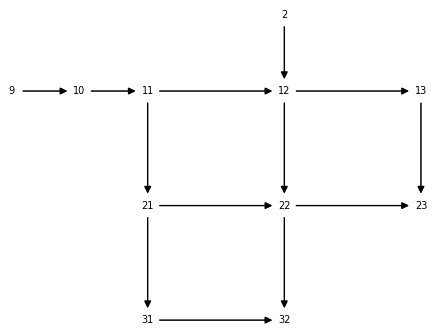Optimal sensor placement (SP) usually minimizes an impact measure, such as the amount of contaminated water or the number of inhabitants affected before detection. The common choice is to minimize the minimum detection time (MDT) averaged over a set of contamination events, with contaminant injected at a different location. Given a SP, propagation is simulated through a hydraulic software model of the network to obtain spatio-temporal concentrations and the average MDT. Searching for an optimal SP is NP-hard: even for mid-size networks, efficient search methods are required, among which evolutionary approaches are often used. A bi-objective formalization is proposed: minimizing the average MDT and its standard deviation, that is the risk to detect some contamination event too late than the average MDT. We propose a data structure (sort of spatio-temporal heatmap) collecting simulation outcomes for every SP and particularly suitable for evolutionary optimization. Indeed, the proposed data structure enabled a convergence analysis of a population-based algorithm, leading to the identification of indicators for detecting problem-specific converge issues which could be generalized to other similar problems. We used Pymoo, a recent Python framework flexible enough to incorporate our problem specific termination criterion. Results on a benchmark and a real-world network are presented.
翻译:最佳传感器定位(SP)通常最大限度地减少影响措施,例如受污染的水量或受影响的居民数量,然后检测出来; 通常的选择是将污染事件的平均最低探测时间(MDT)与污染事件的平均时间(MDT)降到最低程度,在不同的地点注入污染物; SP通过网络的液压软件模型模拟传播,以获得时空浓度和平均MDT。 寻找最佳的SP是NP硬的:即使对于中等规模的网络,也需要有效的搜索方法,其中往往使用进化方法。 提出了双重目标的正规化:最大限度地减少平均MDT及其标准偏差,即发现某些污染事件的风险太晚于一般MDT。 我们提出了一个数据结构(spatio-时空热映的系统),收集每个SP的模拟结果,特别适合进化优化。事实上,拟议的数据结构使得能够对基于人口的算法进行趋同分析,从而确定发现特定问题的指标,这些指标可以与其他类似的问题一样被普遍使用。 我们使用的是“Pymoo”标准,我们使用了一个相当的“标准”。

